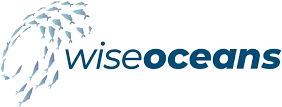Email marketing made easy for charities and nonprofits
Join thousands of charities and nonprofits who trust EmailOctopus to keep email marketing simple and affordable


Email marketing. Nothing else.
We’re laser-focused on building the easiest email marketing in the world. No SMS, no clutter, no paying for extra services you don’t need.
Quickly create engaging emails using our intuitive drag-and-drop editor


Learn how nonprofits like you are using EmailOctopus


How WiseOceans uses EmailOctopus to help with ocean conservation
WiseOceans uses EmailOctopus to deliver job alerts, educational content and conservation updates to a global community of ocean lovers. As WiseOceans expands its restoration projects and launches new programmes, email remains a core channel for inspiring and educating their audience.
Other platforms are way more expensive
We chose EmailOctopus for the ease of use and affordable pricing. It has been a huge contribution to building and growing our brand.
Amazing Tool for Newsletter (+75k subs and growing!)
EmailOctopus is very easy to use and an amazing tool for the price! The system has saved me so much time and money, could not be happier.
Additionally, the support team is very helpful and responsive.
Simple and cost effective pricing
Among all the email marketing platforms I have tried, I must say that EmailOctopus comes out on top in terms of simplicity, pricing and support. Their email deliverability is also very good. Check them out.
EmailOctopus is AMAZING!!!
I can't commend the support team enough with the speed of their responses! And that even goes for the users of the free version. They make me feel like my questions are important and worthy of a prompt response/resolution.
Highly recommended
I use EmailOctopus to send a weekly real estate newsletter to over 80,000 clients, and it’s been excellent. The pricing is very competitive, the platform is easy to use, and the support team is responsive and helpful. Great deliverability.
Excellent support!
I’ve always found that EmailOctopus has a friendly, helpful and informative support team to give timely advice.
Simplicity at its best
I've been using EmailOctopus for a few months now, and it's brilliant! The customer service team are really helpful and the platform itself has made sending out interactive, optimised emails a dream. It's also very reasonably priced for what you get.
Best customer service you will ever encounter!
Superb, only using the free service currently because we do not have either a big enough customer list or do enough email marketing to warrant a paid for service currently. However, the customer service provided has been exceptional.
Other platforms are way more expensive
We chose EmailOctopus for the ease of use and affordable pricing. It has been a huge contribution to building and growing our brand.
Amazing Tool for Newsletter (+75k subs and growing!)
EmailOctopus is very easy to use and an amazing tool for the price! The system has saved me so much time and money, could not be happier.
Additionally, the support team is very helpful and responsive.
Simple and cost effective pricing
Among all the email marketing platforms I have tried, I must say that EmailOctopus comes out on top in terms of simplicity, pricing and support. Their email deliverability is also very good. Check them out.
EmailOctopus is AMAZING!!!
I can't commend the support team enough with the speed of their responses! And that even goes for the users of the free version. They make me feel like my questions are important and worthy of a prompt response/resolution.
Highly recommended
I use EmailOctopus to send a weekly real estate newsletter to over 80,000 clients, and it’s been excellent. The pricing is very competitive, the platform is easy to use, and the support team is responsive and helpful. Great deliverability.
Excellent support!
I’ve always found that EmailOctopus has a friendly, helpful and informative support team to give timely advice.
Simplicity at its best
I've been using EmailOctopus for a few months now, and it's brilliant! The customer service team are really helpful and the platform itself has made sending out interactive, optimised emails a dream. It's also very reasonably priced for what you get.
Best customer service you will ever encounter!
Superb, only using the free service currently because we do not have either a big enough customer list or do enough email marketing to warrant a paid for service currently. However, the customer service provided has been exceptional.
Other platforms are way more expensive
We chose EmailOctopus for the ease of use and affordable pricing. It has been a huge contribution to building and growing our brand.
Amazing Tool for Newsletter (+75k subs and growing!)
EmailOctopus is very easy to use and an amazing tool for the price! The system has saved me so much time and money, could not be happier.
Additionally, the support team is very helpful and responsive.
Simple and cost effective pricing
Among all the email marketing platforms I have tried, I must say that EmailOctopus comes out on top in terms of simplicity, pricing and support. Their email deliverability is also very good. Check them out.
EmailOctopus is AMAZING!!!
I can't commend the support team enough with the speed of their responses! And that even goes for the users of the free version. They make me feel like my questions are important and worthy of a prompt response/resolution.
Highly recommended
I use EmailOctopus to send a weekly real estate newsletter to over 80,000 clients, and it’s been excellent. The pricing is very competitive, the platform is easy to use, and the support team is responsive and helpful. Great deliverability.
Excellent support!
I’ve always found that EmailOctopus has a friendly, helpful and informative support team to give timely advice.
Simplicity at its best
I've been using EmailOctopus for a few months now, and it's brilliant! The customer service team are really helpful and the platform itself has made sending out interactive, optimised emails a dream. It's also very reasonably priced for what you get.
Best customer service you will ever encounter!
Superb, only using the free service currently because we do not have either a big enough customer list or do enough email marketing to warrant a paid for service currently. However, the customer service provided has been exceptional.
Other platforms are way more expensive
We chose EmailOctopus for the ease of use and affordable pricing. It has been a huge contribution to building and growing our brand.
Amazing Tool for Newsletter (+75k subs and growing!)
EmailOctopus is very easy to use and an amazing tool for the price! The system has saved me so much time and money, could not be happier.
Additionally, the support team is very helpful and responsive.
Simple and cost effective pricing
Among all the email marketing platforms I have tried, I must say that EmailOctopus comes out on top in terms of simplicity, pricing and support. Their email deliverability is also very good. Check them out.
EmailOctopus is AMAZING!!!
I can't commend the support team enough with the speed of their responses! And that even goes for the users of the free version. They make me feel like my questions are important and worthy of a prompt response/resolution.
Highly recommended
I use EmailOctopus to send a weekly real estate newsletter to over 80,000 clients, and it’s been excellent. The pricing is very competitive, the platform is easy to use, and the support team is responsive and helpful. Great deliverability.
Excellent support!
I’ve always found that EmailOctopus has a friendly, helpful and informative support team to give timely advice.
Simplicity at its best
I've been using EmailOctopus for a few months now, and it's brilliant! The customer service team are really helpful and the platform itself has made sending out interactive, optimised emails a dream. It's also very reasonably priced for what you get.
Best customer service you will ever encounter!
Superb, only using the free service currently because we do not have either a big enough customer list or do enough email marketing to warrant a paid for service currently. However, the customer service provided has been exceptional.
Our customer support is here to help
A platform so easy you’ll probably never need to talk to us. But if you do, our award-winning support team are always on hand.

Average response time on live chat
9 seconds
Start for free today
Sign up and send your first email in minutes.
No credit card required.









